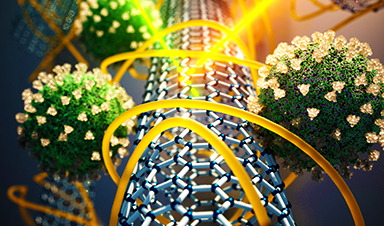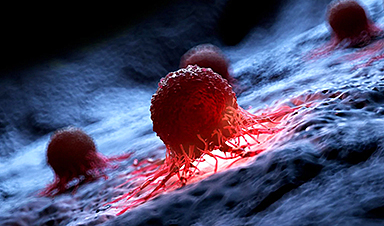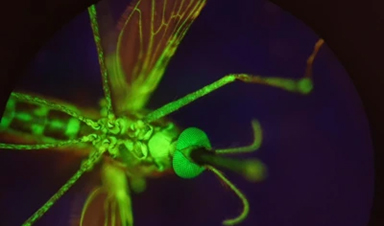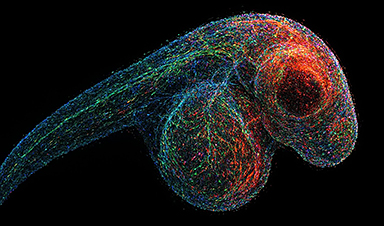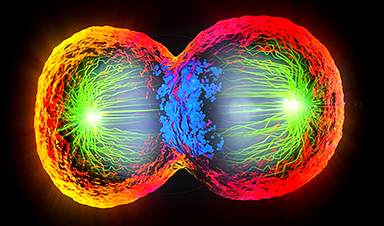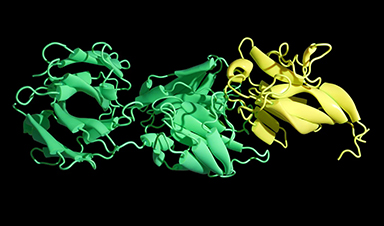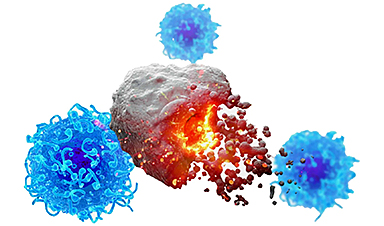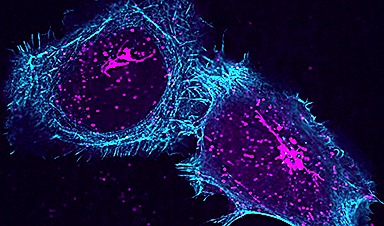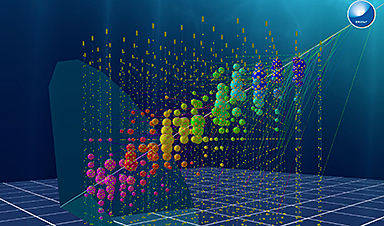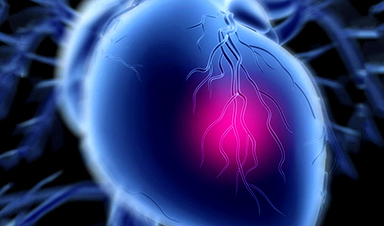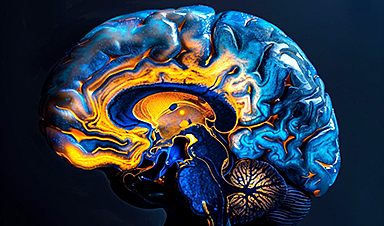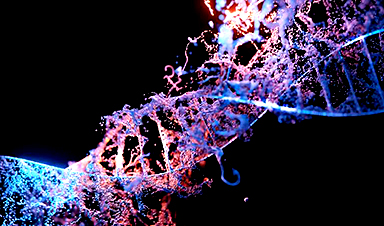| Using specialized carbon nanotubes, MIT engineers have designed a novel sensor that can detect SARS-CoV-2 without any antibodies, giving a result within minutes. Their new sensor is based on technology that can quickly generate rapid and accurate diagnostics, not just for Covid-19 but for future pandemics, the researchers say. | |
| “A rapid test means that you can open up travel much earlier in a future pandemic. You can screen people getting off of an airplane and determine whether they should quarantine or not. You could similarly screen people entering their workplace and so forth,” says Michael Strano, the Carbon P. Dubbs Professor of Chemical Engineering at MIT and the senior author of the study. “We do not yet have technology that can develop and deploy such sensors fast enough to prevent economic loss.” | |
| The diagnostic is based on carbon nanotube sensor technology that Strano’s lab has previously developed. Once the researchers began working on a Covid-19 sensor, it took them just 10 days to identify a modified carbon nanotube capable of selectively detecting the viral proteins they were looking for, and then test it and incorporate it into a working prototype. This approach also eliminates the need for antibodies or other reagents that are time-consuming to generate, purify, and make widely available. | |
| MIT postdoc Sooyeon Cho and graduate student Xiaojia Jin are the lead authors of the paper, which appears in Analytical Chemistry. Other authors include MIT graduate students Sungyun Yang and Jianqiao Cui, and postdoc Xun Gong. | |
Molecular recognition |
|
| Several years ago, Strano’s lab developed a novel approach to designing sensors for a variety of molecules. Their technique relies on carbon nanotubes — hollow, nanometer-thick cylinders made of carbon that naturally fluoresce when exposed to laser light. They have shown that by wrapping such tubes in different polymers, they can create sensors that respond to specific target molecules by chemically recognizing them. | |
| Their approach, known as Corona Phase Molecular Recognition (CoPhMoRe), takes advantage of a phenomenon that occurs when certain types of polymers bind to a nanoparticle. Known as amphiphilic polymers, these molecules have hydrophobic regions that latch onto the tubes like anchors and hydrophilic regions that form a series of loops extending away from the tubes. | |
| Those loops form a layer called a corona surrounding the nanotube. Depending on the arrangement of the loops, different types of target molecules can wedge into the spaces between the loops, and this binding of the target alters the intensity or peak wavelength of fluorescence produced by the carbon nanotube. | |
| Earlier this year, Strano and InnoTech Precision Medicine, a Boston-based diagnostics developer, received a National Institutes of Health grant to create a CoPhMoRe sensor for SARS-CoV-2 proteins. Researchers in Strano’s lab had already developed strategies that allow them to predict which amphiphilic polymers will interact best with a particular target molecule, so they were able to quickly generate a set of 11 strong candidates for SARS-CoV-2. | |
| Within about 10 days of starting the project, the researchers had identified accurate sensors for both the nucleocapsid and the spike protein of the SARS-CoV-2 virus. During that time, they also were able to incorporate the sensors into a prototype device with a fiber optic tip that can detect fluorescence changes of the biofluid sample in real time. This eliminates the need to send the sample to a lab, which is required for the gold-standard PCR diagnostic test for Covid-19. | |
| This device produces a result within about five minutes, and can detect concentrations as low as 2.4 picograms of viral protein per milliliter of sample. In more recent experiments done after this paper was submitted, the researchers have achieved a limit of detection lower than the rapid tests that are now commercially available. | |
| The researchers also showed that the device could detect the SARS-CoV-2 nucleocapsid protein (but not the spike protein) when it was dissolved in saliva. Detecting viral proteins in saliva is usually difficult because saliva contains sticky carbohydrate and digestive enzyme molecules that interfere with protein detection, which is why most Covid-19 diagnostics require nasal swabs. | |
| “This sensor shows the highest range of limit of detection, response time, and saliva compatibility even without any antibody and receptor design,” Cho says. “It is a unique feature of this type of molecular recognition scheme that rapid design and testing is possible, unhindered by the development time and supply chain requirements of a conventional antibody or enzymatic receptor.” |
News
The CDC buried a measles forecast that stressed the need for vaccinations
This story was originally published on ProPublica, a nonprofit newsroom that investigates abuses of power. Sign up to receive our biggest stories as soon as they’re published. ProPublica — Leaders at the Centers for Disease Control and Prevention [...]
Light-Driven Plasmonic Microrobots for Nanoparticle Manipulation
A recent study published in Nature Communications presents a new microrobotic platform designed to improve the precision and versatility of nanoparticle manipulation using light. Led by Jin Qin and colleagues, the research addresses limitations in traditional [...]
Cancer’s “Master Switch” Blocked for Good in Landmark Study
Researchers discovered peptides that permanently block a key cancer protein once thought untreatable, using a new screening method to test their effectiveness inside cells. For the first time, scientists have identified promising drug candidates [...]
AI self-cloning claims: A new frontier or a looming threat?
Chinese scientists claim that some AI models can replicate themselves and protect against shutdown. Has artificial intelligence crossed the so-called red line? Chinese researchers have published two reports on arXiv claiming that some artificial [...]
New Drug Turns Human Blood Into Mosquito-Killing Weapon
Nitisinone, a drug for rare diseases, kills mosquitoes when present in human blood and may become a new tool to fight malaria, offering longer-lasting, environmentally safer effects than ivermectin. Controlling mosquito populations is a [...]
DNA Microscopy Creates 3D Maps of Life From the Inside Out
What if you could take a picture of every gene inside a living organism—not with light, but with DNA itself? Scientists at the University of Chicago have pioneered a revolutionary imaging technique called volumetric DNA microscopy. It builds [...]
Scientists Just Captured the Stunning Process That Shapes Chromosomes
Scientists at EMBL have captured how human chromosomes fold into their signature rod shape during cell division, using a groundbreaking method called LoopTrace. By observing overlapping DNA loops forming in high resolution, they revealed that large [...]
Bird Flu Virus Is Mutating Fast – Scientists Say Our Vaccines May Not Be Enough
H5N1 influenza is evolving rapidly, weakening the effectiveness of existing antibodies and increasing its potential threat to humans. Scientists at UNC Charlotte and MIT used high-performance computational modeling to analyze thousands of viral protein-antibody interactions, revealing [...]
Revolutionary Cancer Vaccine Targets All Solid Tumors
The method triggers immune responses that inhibit melanoma, triple-negative breast cancer, lung carcinoma, and ovarian cancer. Cancer treatment vaccines have been in development since 2010, when the first was approved for prostate cancer, followed [...]
Scientists Uncover Hidden Protein Driving Autoimmune Attacks
Scientists have uncovered a critical piece of the puzzle in autoimmune diseases: a protein that helps release immune response molecules. By studying an ultra-rare condition, researchers identified ArfGAP2 as a key player in immune [...]
Mediterranean neutrino observatory sets new limits on quantum gravity
Quantum gravity is the missing link between general relativity and quantum mechanics, the yet-to-be-discovered key to a unified theory capable of explaining both the infinitely large and the infinitely small. The solution to this [...]
Challenging Previous Beliefs: Japanese Scientists Discover Hidden Protector of Heart
A Japanese research team found that the oxidized form of glutathione (GSSG) may protect heart tissue by modifying a key protein, potentially offering a novel therapeutic approach for ischemic heart failure. A new study [...]
Millions May Have Long COVID – So Why Can’t They Get Diagnosed?
Millions of people in England may be living with Long Covid without even realizing it. A large-scale analysis found that nearly 10% suspect they might have the condition but remain uncertain, often due to [...]
Researchers Reveal What Happens to Your Brain When You Don’t Get Enough Sleep
What if poor sleep was doing more than just making you tired? Researchers have discovered that disrupted sleep in older adults interferes with the brain’s ability to clean out waste, leading to memory problems [...]
How to prevent chronic inflammation from zombie-like cells that accumulate with age
In humans and other multicellular organisms, cells multiply. This defining feature allows embryos to grow into adulthood, and enables the healing of the many bumps, bruises and scrapes along the way. Certain factors can [...]
Breakthrough for long Covid patients who lost sense of smell
A breakthrough nasal surgery has restored the sense of smell for a dozen long Covid patients. Experts at University College London Hospitals NHS Foundation Trust successfully employed a technique typically used for correcting blocked nasal passages, [...]
